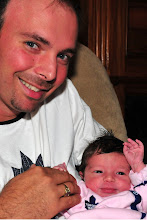I don't know how much weight I should be putting on the PET scan - but I think it is pretty important. I did a little research on PET scans ...
I will be injected (or swallow or inhale) with a radioactive material (essentially sugar) and then one hour later will go into the scanner for between 30 and 60min. I am guessing that I will have to lay with my hands over my head for the duration - if you don't normally do this it is a huge pain in the ass - HUGE - hurts like hell. The PET scan is best combined with a CT scan, which they have requested that I bring a CD of my last one, because the CT scan is best at determining size and location and the PET is best at locating overall cancer regions. PET scans are only good for specific types of cancer (Lymphoma is one) and can be used for diagnosis, during treatment or post-treatment to determine if the cancer is still active. Essentially, the 'sugar' will light up any cancerous areas - whereas the CT scan can only indicate where cancer cells 'might' be.
Ya...so....it is important.
Below is an example of 2 PET scans, before and after treatment for a Lymphoma patient (lets hope for the picture on the right!).

Today I receive a new picture...2 very good ol' friends...Phil and Bryan.

Ciao...
FYI - some more official technical information on PET scans:
Taken from the Ontario Health Technology Advisory Committee:Positron Emission Tomography (PET) is a nuclear medicine diagnostic imaging exam. Nuclear medicine exams use small amounts of radioactive material (known as radiopharmaceuticals) that are usually injected into a person’s bloodstream but are sometimes swallowed by mouth or inhaled as a gas. The most common radiopharmaceutical used in PET scanning is 18FDG (Fluorodeoxyglucose). Health Canada regulates 18FDG as a new product and authorizes only licensed manufacturers to distribute it to PET scanning centres. The use of 18FDG is subject to a Clinical Trials Agreement unless the institution applies for a Notice of Compliance to manufacture the radiopharmaceutical for a specific indication and maintains an Establishment License. 18FDG is a form of sugar and is taken up avidly by many cancers because cancers use sugar for growth. However, metabolically active normal tissues like the brain, as well as benign conditions such as inflammation, also take up 18FDG. Imaging exams, such as plain radiography, ultrasound, computed axial tomography (CAT or CT) and magnetic resonance imaging (MRI) are routinely used to provide information on the shape and size of anatomical structures and this information is used for both diagnosis and treatment decision-making. However, PET scanning can provide information on both the location and the extent of metabolic activity of abnormal tissues such as cancer and it has the potential to identify areas of abnormal metabolic activity before there is distortion of the anatomy. The key question is does the information from PET make a difference in the clinical management of patients compared to these other tests?
A PET scanner works with a computer to create two- and three-dimensional images of the structureand function of organs and tissues. This technology is useful in determining the stage (extent) of somecancers, which in turn may help to define the most appropriate treatment for the stage of cancer.
Like any diagnostic test, PET must be used based on evidence because it can pose risks, as well as benefits. PET scanning can give false results if chemical balances within the body are not normal. As well, cancers that do not take up 18FDG may give a negative PET scan. If the PET scan upstages cancer accurately (i.e., the cancer is more serious than it was originally thought to be) patients can avoid aggressive treatments that will not help them. However, if the PET scan upstages the cancer incorrectly, patients with potentially curable cancers risk not getting the most appropriate treatment for their cancer or they may get aggressive treatments they do not need. Of particular concern is the recent report from the U.S. that 70% of patients who were scheduled to have a biopsy (the gold standard for diagnosing cancer is biopsy followed by pathological exam) before a PET scan ended up not having a biopsy and having treatment based on their PET scan results alone. The PET scan was three times more likely to lead to treatment than non-treatment, with physicians changing the management of 36.5% of their patients after the PET scan.





1 comment:
For pet scan online book we create protal pet scan in chandigarh at best prices.
Post a Comment